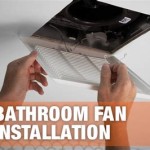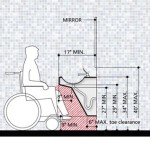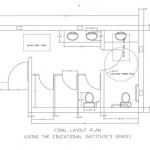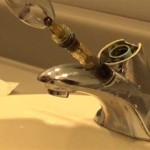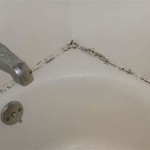Building Code for Bathroom Vents
Bathroom vents are crucial components of any bathroom design, ensuring proper ventilation and moisture control. Building codes provide specific guidelines for the installation and maintenance of bathroom vents to ensure optimal functionality and safety. Adhering to these codes is essential for homeowners and contractors alike.
### Code RequirementsBuilding codes typically specify the following requirements for bathroom vents:
1. Exhaust Capacity:
Vents must have a minimum exhaust capacity of 50 cubic feet per minute (CFM). This ensures sufficient airflow to remove moisture and odors from the bathroom.2. Vent Location:
Vents should be installed directly over the shower or bathtub to effectively capture steam and moisture. The vent should be located within 12 inches of the ceiling.3. Ducting:
Vents must be connected to a duct that leads directly to the outside of the building. The duct should be rigid and sealed properly to prevent air leaks.4. Fan Type:
Bathroom vents typically use centrifugal or axial fans. Centrifugal fans are more efficient and quieter, while axial fans are less expensive and easier to install.5. Timer Switch:
Many building codes require bathroom vents to be equipped with a timer switch that automatically turns the fan on for a specified period after the bathroom has been used. This ensures continued ventilation for a limited time. ### Maintenance and InspectionIn addition to adhering to building code requirements during installation, regular maintenance and inspection are crucial for the proper functioning of bathroom vents:
1. Cleaning:
Vents and ducts should be cleaned regularly to remove dust and debris. This can be done using a vacuum cleaner or a brush.2. Inspection:
Vents and ducts should be inspected periodically for damage or leaks. Any issues should be addressed promptly.3. Filter Replacement:
Some bathroom vents have filters that need to be replaced periodically. This helps improve air quality and prevent dust buildup. ### Benefits of Proper VentilationProperly installed and maintained bathroom vents provide numerous benefits, including:
1. Moisture Control:
Vents effectively remove moisture from the bathroom, preventing mold, mildew, and other moisture-related issues.2. Odor Control:
Vents remove unpleasant odors from the bathroom, creating a more comfortable environment.3. Air Quality Improvement:
Vents circulate fresh air into the bathroom, improving air quality and reducing indoor air pollutants. ### ConclusionBuilding codes for bathroom vents provide essential guidelines for ensuring proper ventilation and moisture control. By adhering to these requirements and performing regular maintenance, homeowners and contractors can create safe and comfortable bathroom environments. Proper ventilation plays a crucial role in preventing moisture-related problems, improving air quality, and enhancing overall bathroom functionality.

How To Use An In Line Exhaust Fan Vent Two Bathrooms Diy Family Handyman

Bathroom Regulations Vent Axia

Methods Of Venting Plumbing Fixtures And Traps In The 2024 International Code Icc

Code Requirement For Bathroom Vent Location Exhaust Checkthishouse

Bathroom Exhaust Fans Building America Solution Center

We All Like To Vent Dealing With The Hot And Moist Air Ncw Home Inspections Llc

Can A Bathroom Fan Vent Into The Attic Code Explained Building Trainer

How To Vent A Toilet Sink And Shower Drain

Vent Options For Plumbing Drains Fine Homebuilding

Bathroom Exhaust Fans Building America Solution Center
Related Posts

